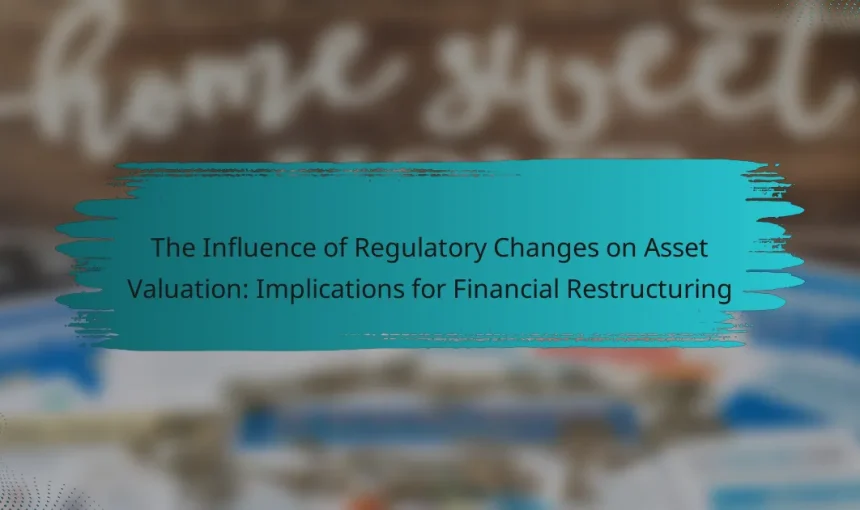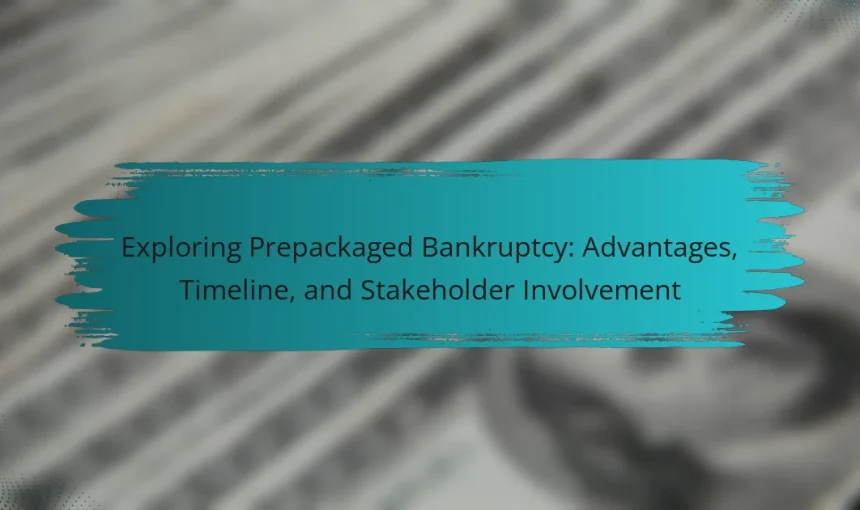The article focuses on the future of US financial restructuring, emphasizing the integration of technology and regulatory reforms. Key innovations, such as blockchain and artificial intelligence, are expected to enhance transparency, reduce costs, and improve decision-making processes during restructuring. Current trends include increased reliance on digital tools, stakeholder engagement, and pre-packaged bankruptcies, while environmental, social, […]
Asset valuations in bankruptcy proceedings are critical for ensuring fair distribution among creditors and stakeholders. Best practices for these valuations include thorough documentation of financial records, engagement of qualified appraisers with bankruptcy experience, and adherence to established standards such as the Uniform Standards of Professional Appraisal Practice (USPAP). Utilizing multiple valuation methods—income, market, and cost […]
Chapter 11 Bankruptcy is a legal framework allowing businesses to reorganize their debts while maintaining operations. This process enables companies to negotiate new payment plans with creditors, retaining control of their assets throughout. The article provides an overview of the Chapter 11 process, highlighting its key benefits, such as financial stability and job preservation, as […]
Intangible assets are non-physical assets that contribute significant value to companies, including patents, trademarks, copyrights, and brand recognition. Their accurate valuation is essential as they can represent a large portion of a firm’s market value, influencing investment decisions, mergers, acquisitions, and financial reporting. This article explores the challenges and strategies involved in valuing intangible assets […]
Real estate valuation is the process of determining the market value of real estate assets, particularly during a company’s financial restructuring. This valuation is essential for evaluating properties that may serve as collateral or be sold to generate capital, impacting negotiations with creditors and the restructuring strategy. Commonly used methods include the income approach, sales […]
Effective communication is essential during restructuring processes, ensuring that all stakeholders comprehend the changes and their implications. This article explores strategies for fostering transparency and trust, which can significantly reduce resistance to change. It highlights the importance of stakeholder engagement in enhancing communication, leading to clearer messaging and increased collaboration. The article also discusses various […]
Tangible assets are physical items with intrinsic value owned by a company, such as real estate, machinery, inventory, and equipment. Their evaluation is crucial during financial restructuring, as it impacts the assessment of a company’s financial health, influences creditor negotiations, and determines potential recovery rates. This article outlines methods for evaluating tangible assets, including the […]
Asset liquidation in US financial restructuring involves the sale of a company’s assets to generate cash for paying creditors, particularly during bankruptcy or financial distress. This process includes the liquidation of inventory, equipment, and real estate, aiming to maximize recovery for stakeholders. The timing of asset liquidation is influenced by market conditions, company liquidity needs, […]
Regulatory changes refer to modifications in laws or rules that govern financial markets and asset management. These changes significantly impact asset valuation by altering risk and return profiles, influencing investor expectations, and affecting compliance costs for companies. Key regulatory updates, including revisions to International Financial Reporting Standards (IFRS) and Generally Accepted Accounting Principles (GAAP), emphasize […]
Prepackaged bankruptcy is a structured approach where a company negotiates a restructuring plan with its creditors prior to filing for bankruptcy, allowing for expedited approval and implementation. This process typically spans 3 to 6 months and involves key stakeholders, including creditors, shareholders, and legal and financial advisors, each playing vital roles in shaping the outcome. […]









